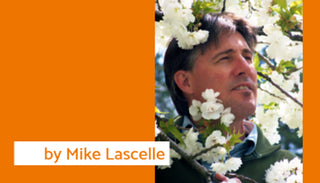
Well, it’s September again and believe it or not, those tulip, daffodil, crocus, and allium bulbs are reappearing on garden centre shelves once again. This dazzling array of potential garden colour can be a little overwhelming at first glance, given the multitude of choices further complicated by a kaleidoscope of flower shades and hues.
So, let me narrow those options by suggesting that you focus on bulbs that act more like perennials, naturalizing and reblooming from year to year with little to no care. Surprisingly, there are quite a few to choose from and given the fact that you are actually saving money by making a long-term purchase, you might be able to convince yourself to indulge in a few more packages, given the value they offer.
Narcissus (Daffodils)
I thought I’d start with the good news first: all Narcissus will naturalize. Admittedly, it is the smaller rock garden types (Cyclamineus) which perform the best over time, but this includes such popular varieties as ‘Tete a Tete’, ‘Jetfire’, and ‘Jack Snipe’. I would still venture into the other Narcissi groups for the unique flower forms and bloom colours. Here you can look at Trumpet (‘King Alfred’), Large-Cupped (‘Pink Charm’), Small-Cupped (‘Barrett Browning’), Double (‘Bridal Crown’), Triandrus (‘Thalia’), and Poeticus (‘Actaea’) types.
Crocuses
More good news: nearly all Crocuses will readily naturalize, although we are generally dealing with two types, as far as size is concerned. The more diminutive of the two are commonly known as Snow Crocus or Crocus chrysanthus, although other botanical species such as C. sieberi (‘Firefly’) and C. tommasinianus (‘Whitewell Purple’) are also included. These are best suited for planting through rock gardens in informal drifts with some popular cultivars being ‘Cream Beauty’ (pale yellow), ‘Lady Killer’ (white & purple), ‘Gipsy Girl’ (gold with bronze highlights), ‘Orange Monarch’, and ‘Advance’ (purple & yellow). The larger flower forms are often known as Dutch Crocus (C. vernus) and they reach an average height of about 4-6”. They can be planted in small bouquets or rounds with a minimum of 10 corms in each hole. Your colour choices here are also quite diverse and include ‘Pickwick’ (striped), ‘Jeanne d’Arc’ (white), ‘Remembrance’ (purple), and ‘Yellow Mammoth’.
Tulipa (Tulips)
With tulips you need to be much more selective as it is mostly those species that are close to botanical that naturalize well, although there are a few exceptions. Here you want to stick to varieties within the Botanical (T. tarda, ‘Shogun’), Greigii (‘Red Riding Hood’), Kaufmanniana (‘The First’) and Fosteriana (‘Orange Emperor’, ‘Yellow Empress’) groups. The exception here is the much larger Darwin Tulips that were originally bred from Single Late and Fosteriana types, blooming in late spring. This group provides many hues including bicolor (‘Oxford Elite’), deep reds (‘Red Impression’), orange (‘Daydream’), white (‘Hakuun’), and yellow (‘Golden Apeldoorn’).
Hyacinthus (Hyacinths)
All hyacinths will naturalize quite well, but if I could give you one piece of advice, it would be to choose moderate-sized bulbs instead of larger ones, as the latter often produce flower spikes that are prone to flopping in our wet springs. The colour selections are also quite diverse and includes purple (‘Purple Sensation’), pink (‘Pink Pearl’), blue (‘Blue Jacket’), yellow (City of Haarlem’), red (‘Jan Bos’), white (‘Carnegie’), and orange (‘Gipsy Queen’). Some gardeners experience skin irritation when handling hyacinth bulbs, so you might want to wear gloves when planting them.
Irises
The two most common bulbous iris that naturalize well are Iris danfordiae (bright yellow) and I. reticulata, which includes many handsome hybrids such as ‘J.S. Dijt’ (deep purple), the aptly named ‘Eye Catcher’ (white, blue, and yellow), and the more common ‘Harmony’ (royal blue). These flower from February to March and make a great addition to the rock garden or the foreground of a sunny mixed border.
Allium (Flowering Onions)
We often overlook allium purchases in the fall because they bloom so late in season, into early summer. Yet these are best planted in autumn and many of them will naturalize well, provided they are oriented in well drained soil. Although most of us are focused on the larger purple varieties such as ‘Globemaster’ or A. giganteum, there are other colours such as white (‘Mount Everest’) or pink (‘Silver Spring’), as well as rock garden types (Allium moly) and those with fireworks-like flower forms (Allium schubertii). Personally, I have found ‘Purple Sensation’ with its mid-sized spherical blooms to be one of the best for naturalizing and the seedheads look great in dried arrangements.
Minor Bulbs
This is only a classification and not a reference to the actual size of the flowers in spring. Case in point would be Fritillaria which includes the tiny Checkered Lily (F. meleagris) as well as the towering Crown Imperial (F. imperialis), which can reach heights of 3-4’ tall. For alba garden enthusiasts, look to Spring Snowflake (Leucojum vernum) or Snowdrops (Galanthus nivalis), although the latter should be planted as soon as possible, as they tend to dry out quickly. Other reliable but spready (some might call slightly invasive) choices include Grape Hyacinth (Muscari armeniacum), Grecian Windflower (Anemone blanda), Siberian Squill (Scilla siberica), Winter Aconite (Eranthis hyemalis), and Glory-of-the-Snow (Chionodoxa luciliae).
A few suggestions for naturalizing bulbs successfully would be to plant at the suggested depth (as shown on package) and not shallower, use bone meal in the hole when planting to develop strong roots, remove the faded flowering stems of larger bulbs (tulips, daffodils), fertilize from late winter to early spring when the foliage starts to emerge and always let the leaves yellow before removing them, because they are feeding the bulbs for next year’s bloom cycle.
All images Copyright 2024 MK Lascelle


